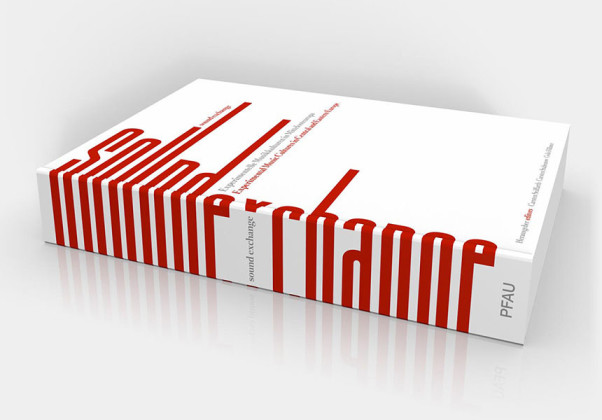Liz Kotz: Words To Be Looked At: Language in 1960s Art (2007)
Filed under book | Tags: · 1960s, art, art history, conceptual art, experimental music, fluxus, language, new york, performance art, text

“Language has been a primary element in visual art since the 1960s—whether in the form of printed texts, painted signs, words on the wall, or recorded speech. In Words to Be Looked At, Liz Kotz traces this practice to its beginnings, examining works of visual art, poetry, and experimental music created in and around New York City from 1958 to 1968. In many of these works, language has been reduced to an object nearly emptied of meaning. Robert Smithson described a 1967 exhibition at the Dwan Gallery as consisting of “Language to be Looked at and/or Things to be Read.” Kotz considers the paradox of artists living in a time of social upheaval who used words but chose not to make statements with them.
Kotz traces the proliferation of text in 1960s art to the use of words in musical notation and short performance scores. She makes two works the “bookends” of her study: the “text score” for John Cage’s legendary 1952 work 4’33”—written instructions directing a performer to remain silent during three arbitrarily determined time brackets—and Andy Warhol’s notorious a: a novel—twenty-four hours of endless talk, taped and transcribed—published by Grove Press in 1968. Examining works by artists and poets including Vito Acconci, Carl Andre, George Brecht, Douglas Huebler, Joseph Kosuth, Jackson Mac Low, and Lawrence Weiner, Kotz argues that the turn to language in 1960s art was a reaction to the development of new recording and transmission media: words took on a new materiality and urgency in the face of magnetic sound, videotape, and other emerging electronic technologies. Words to Be Looked At is generously illustrated, with images of many important and influential but little-known works.”
Publisher MIT Press, 2007
ISBN 0262113082, 9780262113083
333 pages
PDF (42 MB, updated on 2016-10-10)
Comments (5)Sound Exchange: Anthology of Experimental Music Cultures in Central and Eastern Europe 1950-2010 (2012) [English/German]
Filed under book | Tags: · central europe, czech republic, east-central europe, eastern europe, electroacoustic music, electronic music, estonia, experimental music, germany, hungary, latvia, lithuania, music, music history, poland, radio art, slovakia, sound art, sound recording

“The long traditions of experimental music cultures in Central and Eastern Europe are diverse and multifaceted, but have been difficult to access until now. With contributions from selected music, media and cultural studies specialists from eight countries, this anthology bundles together elements of unearthing material locally and documents current positions and historical finds by protagonists, as well as musical aesthetic qualities in the history of musical experiments in Central and Eastern Europe. The anthology pursues commonalities and singularities and discusses their relationship with the international history of experimental music.
The often barely known musical and artistic positions portrayed here show a wide stylistic and aesthetic spectrum of electro-acoustic music, composed and improvised music, musical media art and audio art from 60 years of experimental musical culture in the context of decades-long political repression and an atmosphere of increasing openness and international networking following 1989.”
With contributions by Antoni Beksiak, Balázs Kovács, Daiga Mazvērsīte, Gerhard Lock, Hans-Gunter Lock, Māra Traumane, Martin Flašar, Michal Rataj, Miloš Vojtěchovský, Monika Pasiecznik, Pavel Klusák, Slávo Krekovič, Tautvydas Bajarkevicius, Viestarts Gailītis.
Edited by Carsten Seiffarth, Carsten Stabenow, and Golo Föllmer
Publisher PFAU, Saarbrücken, 2012
ISBN 9783897274877, 3897274876
400 pages
PDF (20 MB, added on 2019-1-25, via book website)
HTML (updated on 2019-1-31)
Reginald Smith Brindle: The New Music: The Avant-garde since 1945, 2nd ed (1975/1987)
Filed under book | Tags: · avant-garde, composition, electronic music, experimental music, music, music history, musique concrète

This guide to the more adventurous evolutions of music since 1945–pointillism, post-Webernism, integral serialism, free dodecaphony, aleatory and indeterminate music, graphics, musique concrète, electronic music, and theatre music–was first published in 1975 and has been reprinted several times. For this second edition, Smith Brindle has added a new chapter reviewing developments over the decade since first publication. He discusses the decline of experimentalism and the reaction against increasing cerebralism and complexity as variously illustrated by the more recent works of Stockhausen, the minimalist works of Reich and Glass, and the partial return to romanticism. He also reviews the technological revolution which has taken place in computer music and concludes that the future of music will for the time being be most closely associated with technological change and development, rather than with radical changes in compositional techniques.
First edition published 1975
Publisher Oxford University Press, 1987
ISBN 0193154714, 9780193154711
222 pages
PDF (DJVU)
Comment (0)
